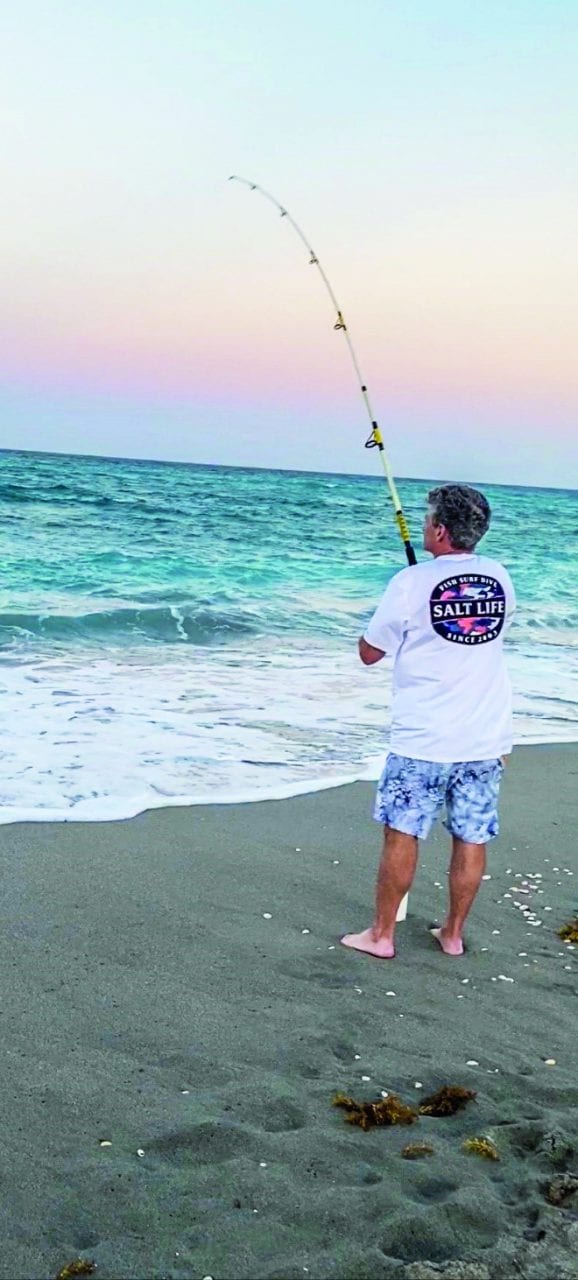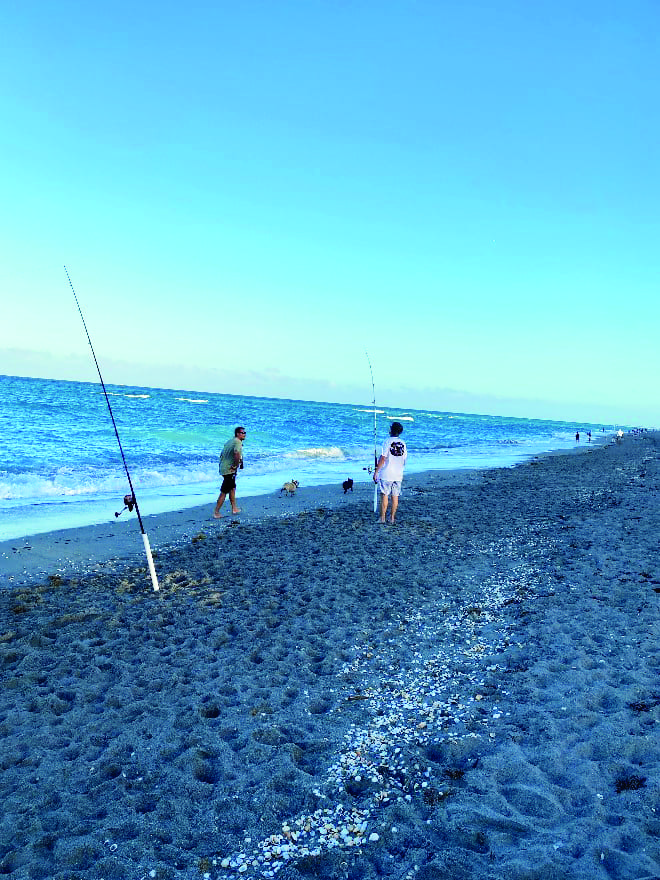By Mark Ambert Contributing Writer

It’s everybody’s favorite time of year along the Florida seaboard – pompano are here! There’s no better tasting fish nor fun way to spend a morning or evening than fishing the Florida beaches for these tasty scrappers. As an added bonus – no need for bag loads of specialty tackle and expensive gear. Its fishing in its most basic form. Let’s explore what’s needed to get you on a cooler full of this fun to catch fish. The Florida pompano is considered by many to be the best tasting fish around.
Pompano are a silver color with a dark dorsal fin and with other fins being yellow. They are very close in looks to permit of similar size. Permit will have a broader body size and can get much larger. Florida pompano range in size from 2 to 4 pounds with some going up to 8 pounds. These fish show up sometime in March along the Florida beaches and begin to migrate once water temperatures reach 70 degrees. They will cruise the beaches just outside the surf line which is where most people target this species. They can also be caught in local bays and inlets including the ICW. Inshore, they can usually be found along channel markers and deeper drop-offs around the flats. We will be focusing our efforts fishing from the beach. I usually prefer the early evening hours just before sunset. This is when pompano will actively cruise the beaches searching for a last-minute meal.
It had been multiple years since my last trip to the surf, so for a refresher on this style of fishing I turned to a good friend, Mark Tafuri.

Mark likes a medium class surf spinning outfit in the 10’ – 12’ range when targeting pompano. A medium sized spinning reel spooled with 10 – 12 pound test mono will work just fine. Long distance casts are unnecessary as these fish cruise the first trough created by wave action along the beach.
We used pre-rigged pompano leaders from Rich Vidulich (www.PompanoRich.com), that you can find at most bait and tackle shops. They are set up exactly as needed and usually with two circle hooks appropriately sized and spaced. Pyramid or Sputnik sinkers attach to the bottom of the rig seem to work best at holding the sandy bottom these fish prefer. For bait, and to keep things simple, I use fresh frozen sand fleas (also called sand crabs).
Pro Tip – Mark sweetens his rigs with artificial bait such as Fish Gum or Fish Bites available at local tackle shops. This way – if the sand flea is knocked off the hook during the cast you will still have a bait on your hook. Fish Gum comes in 14” strips – just cut it to size.
Mark likes to target evening fishing – a very relaxing and productive two hours prior to and right up to sunset. According to Mark, the bite will taper off then stop as soon as the sun touches the horizon. He sets up two rods per angler with the pre-rigged pompano leaders and sand flea / Fish Gum combination and puts the fish gum on first. Mark prefers an 11’ rod. This definitely makes casting the heavier sinkers a little easier, as well as allowing beach goers easy access underneath your rods! Mark uses 12 pound Ande Ghost on all his reels and prefers mono over braid for this type of fishing. According to Mark, monofilament line allows the stretch needed to accommodate the wave action without lifting the sinker. An appropriately sized weight is used and most fall in the category of 2 – 6oz. The cast is fairly tight to the shoreline targeting just behind the first waves where a change in water color is an indication of the first trough. This is the pompano highway where they search the beaches for morsels of food such as sand fleas, shrimp, and small baitfish. Reel the line tight to the rod and place in a sand spike/rod holder; then sit back and wait for your first bite! You will see the rod tip begin to dance then go down when a fish strikes. Mark usually likes to recheck the baits every fifteen minutes and to clear weeds from the line.
Pompano will usually hook themselves – especially when using circle hooks. They are strong fighters for their size and can outfight most any fish in the same size class. When you get a double header be prepared for a spirited battle!
Pro Tip – Pompano also respond well to artificials like jigs – especially when they are tipped with shrimp. You can bring a casting rod and jig combination to use while waiting for a bite.
Make sure you bring a cooler packed with ice to keep the fish fresh. You can clean them back home or at a local cleaning station. Most people opt to leave the skin on as they are a fairly lean fish. Now it’s time to put what you’ve learned to good use. Pack a chair – kick back and spend a wonderful evening on the beach with family and friends catching this tasty and spirited fighter!

